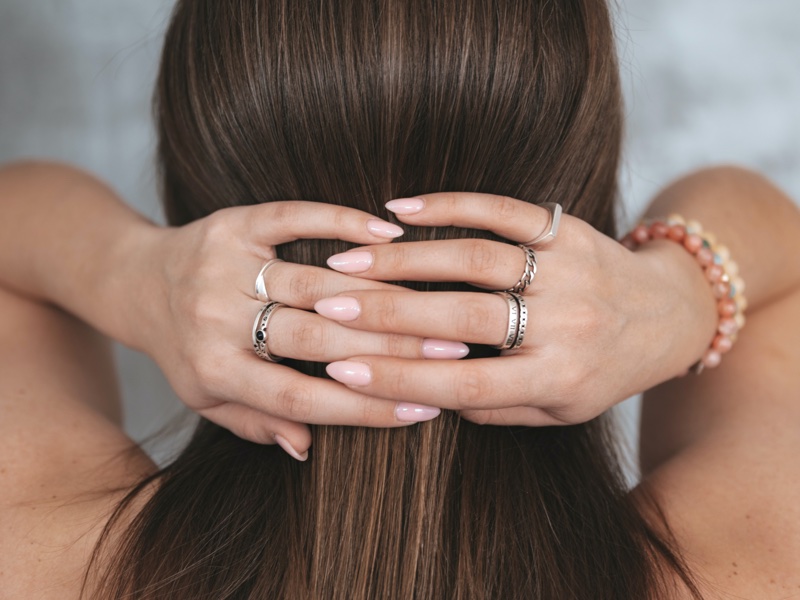Clear conditioners are historically tricky to formulate, but there is a gap in the hair care market for the luxury cues that transparent formulations offer.
Below, Alomgir Ali, Senior Formulation Scientist, Personal Care at IFF; and Carole Gherardi, Market Segment Leader, Personal Care at IFF, provide a fail-safe guide to making a clear conditioner.
Have you ever noticed that you rarely see a clear conditioner on the shelves?
There might be rows of clear shampoos, hundreds of clear hair oils, but seldom a clear conditioner.
This is because the focal conditioning components in conditioners tend to be chosen from a list of fats, oils, silicones and positively charged species that work by appending to the negative charge of damaged hair, coating the hair cuticle in a way that makes combing and movement between hair fibres more fluid and require less energy.
These conditioning components typically have a long, oil-loving moiety within the molecule that is insoluble in water.
This means that a transparent, water-based formulation is difficult to make, as the oil-loving part of the molecule will want to separate from the water immediately.
There are, of course, clear oils which would make fantastic transparent bases, but oil thickening is often an issue.
Additionally, if some of the conditioning raw materials are solids and opaque at room temperature, the final formulation will be turbid and likely have a poor sensory feel.
The workaround that has been used for over a century is to create an emulsion. One common emulsion is an oil-in-water (o/w) mixture, where microscopic droplets of oil (and some of the conditioning agents) are suspended in a continuous phase of water, which contains structure-creating and thickening agents.
Surfactants, emulsifiers and other conditioning agents sit at the surface between the oil and the water, holding the whole formulation together, resulting in a beautiful and thick, but white and opaque, hair conditioner.
A novel hair care format
But what if you could unlock the potential of a transparent formulation that could condition just as well as the standard conditioners on the market?
A transparent formulation can open up the opportunity to build a novel and exciting format for a product people have used for decades.
Water-based formulations have far fewer thickening constraints than their oil-based counterparts, and make it much easier to build a sustainable, biodegradable formula.
Aurist AGC is a novel bio-based and biodegradable conditioning polymer from a new class of biopolymers called Designed Enzymatic Biopolymers (DEB). DEB uses a unique enzymatic process to create bespoke biopolymers from sugar, at mild conditions and with high purity. The polymers can be branched or further functionalised.
With the recent increase in silicone-free claims and current conditioners of choice falling out of favour due to their often low naturality, potential for irritation and persistence in the environment, there is a strong demand in the personal care industry for bio-based, next generation conditioners.
Existing cationic solutions are often difficult to formulate with and may not be compatible in transparent formulations.
Aurist AGC is a water-soluble cationic biopolymer, supplied in liquid form and can be used in both hot and cold process formulations. It is readily biodegradable and shows no irritation.
It can be used alongside other conditioning polymers to create a standard conditioning emulsion. In this article, we demonstrate the potential of Aurist AGC by creating a clear conditioner with a high natural origin content of 96.43% according to ISO 16128.

Aurist AGC is a novel bio-based and biodegradable conditioning polymer
For a water-based, transparent hair conditioner formulation, we’ve selected hydroxyethylcellulose to build a transparent matrix within the formulation, helping to suspend oil droplets dispersed throughout the mixture.
The structure and body of the formula is built and supported by using polyglyceryl-based, natural emulsifiers which allow for a clear base.
To aid solubility of raw materials, as well as to provide lubrication, caprylyl/capryl glucoside is added. This surfactant is supplied as a clear dilution and is low foaming, exhibiting excellent sensory in application and easy rinse off.
For benefits and claims, propanediol is a clear and natural solubiliser that helps to incorporate the perfume as well as to boost shine and softness of hair.
Stearamidopropyl dimethylamine is added as a co-conditioner along with glyceryl oleate, both of which can be used at low levels to create a transparent formulation.
Genencare OSMS BA (INCI: Betaine) and Genencare OSMS MI (INCI: Inositol), which dissolve completely in water, impart hair strengthening properties and contribute to scalp care.
This hair conditioner formulation applies beautifully and provides easy combing and excellent hair feel.
It features high naturality ingredients while maintaining complete transparency.

